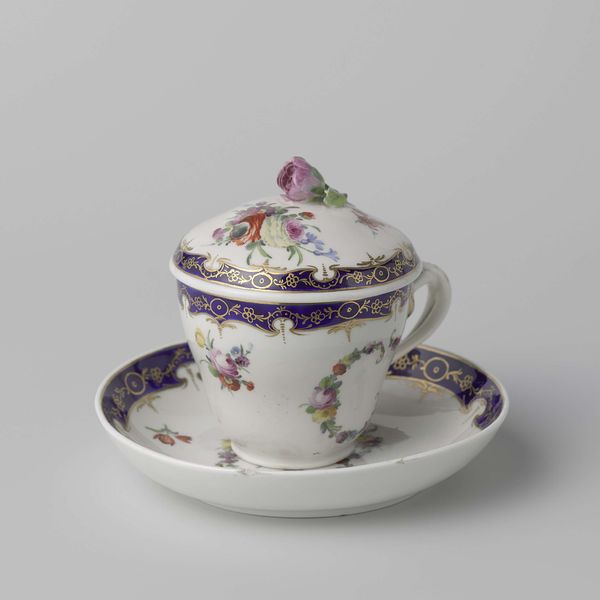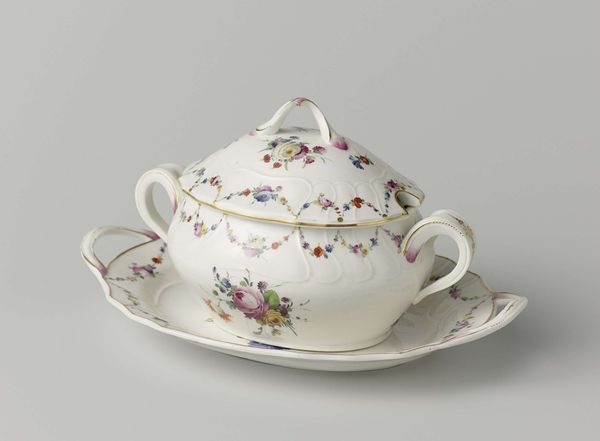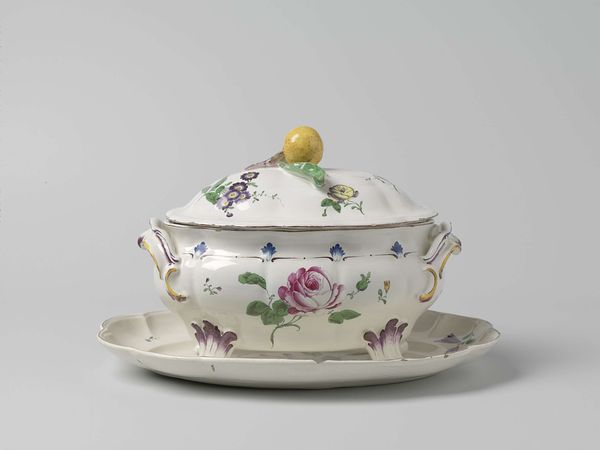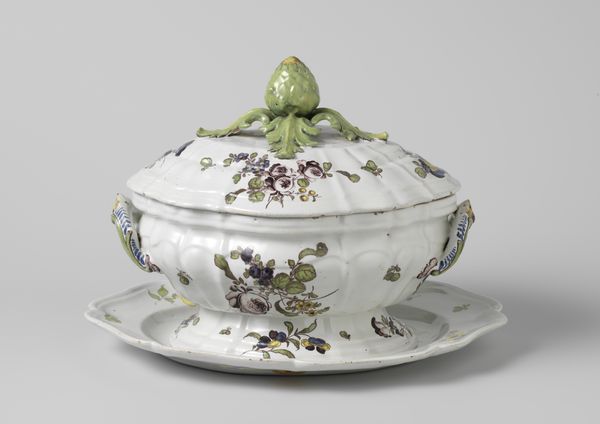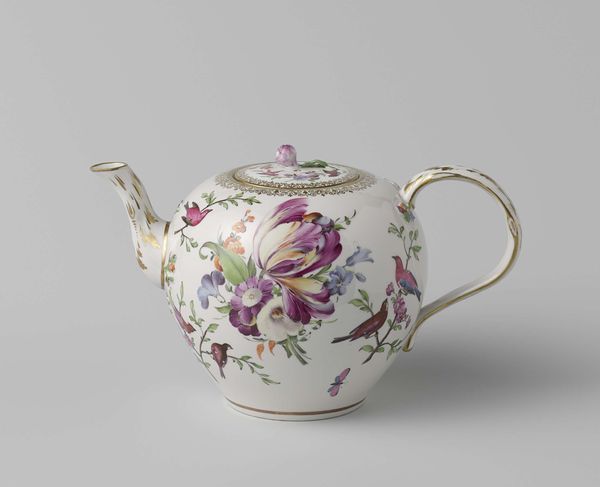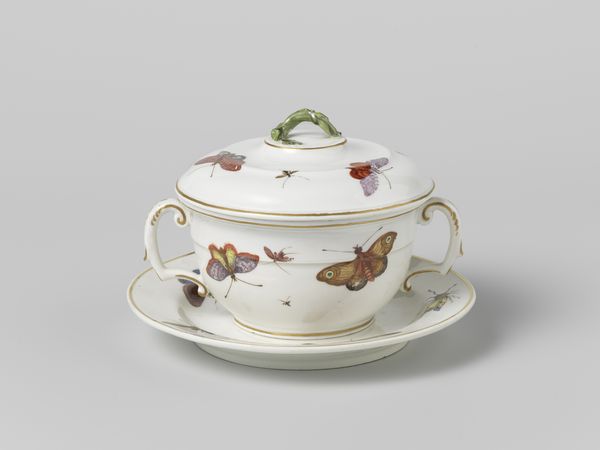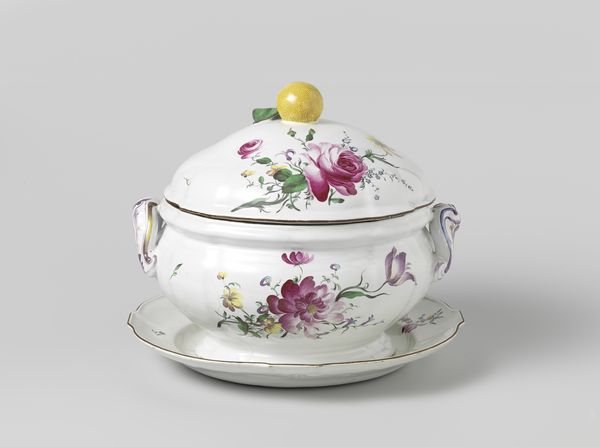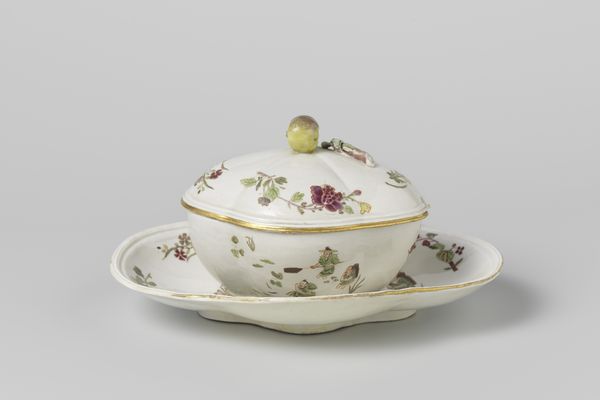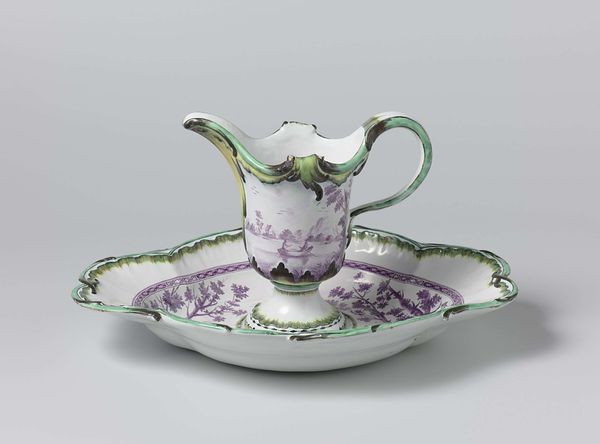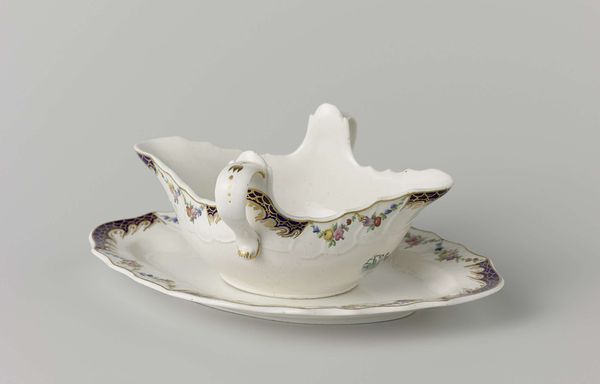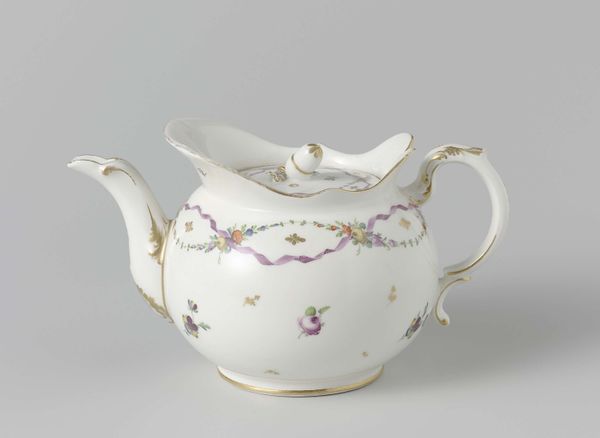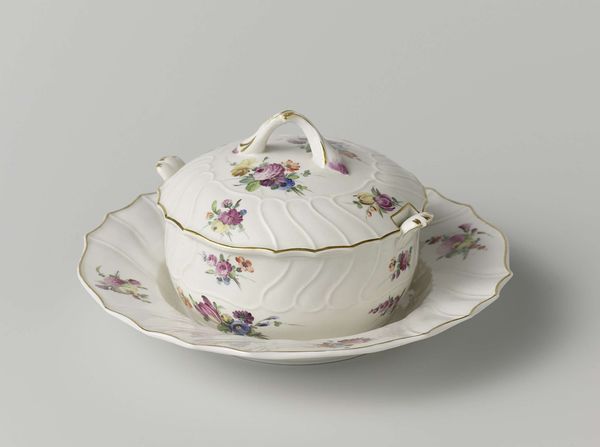
Terrine op schotel, veelkleurig beschilderd met een bloemboeket 1760 - 1770
0:00
0:00
ceramic, earthenware
#
ceramic
#
earthenware
#
decorative-art
#
rococo
Dimensions: height 17.5 cm, width 23.5 cm, depth 20.2 cm
Copyright: Rijks Museum: Open Domain
This terrine with its stand was made in Delft, probably around 1760, by Johan van Kerkhoff. It’s tin-glazed earthenware – what we often call ‘Delftware’. This was made to mimic Chinese porcelain, a luxury commodity in Europe at the time. Delftware is deceptively simple in appearance, but it actually represents a complex chain of production. The clay itself was carefully sourced and prepared, formed on a wheel, fired, then covered with a white tin glaze. This provided the surface for Kerkhoff to paint these vivid floral decorations. Note the raised fruit on the lid – a whimsical touch. The creation of Delftware was a labor-intensive process, involving multiple specialists: potters, painters, and kiln operators. It reflects the increasing division of labor that characterized the rise of capitalism. By understanding the materials and making of this terrine, we can appreciate not only its beauty, but also its place in a broader social and economic context. It encourages us to think about how objects connect to craft, design, and the wider world of production.
Comments
No comments
Be the first to comment and join the conversation on the ultimate creative platform.

